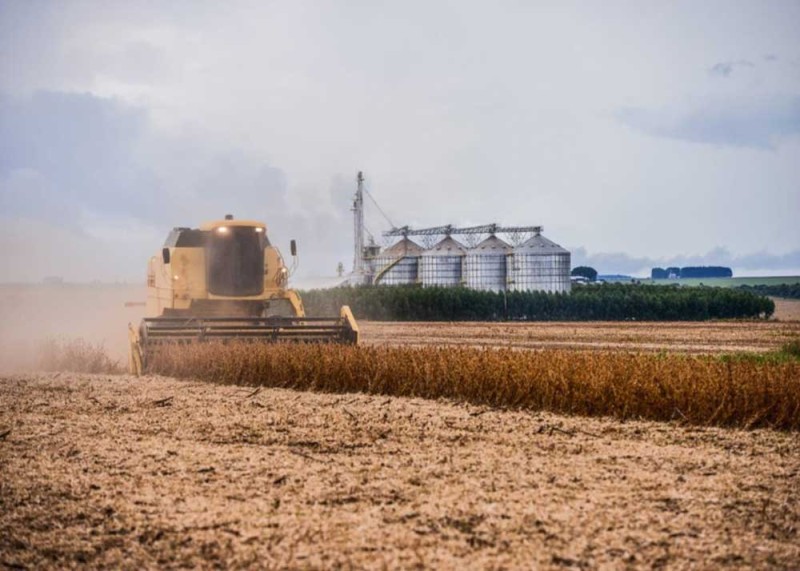
“K型分化”一词近来盛行,用以描述当前美国的经济态势:顶层富有群体财富持续增长,其余人群却艰难度日。
而如今,美国农业经济也被另一种“K型分化”所困扰:生产成本不断攀升,农产品价格却急剧下跌。
疫情期间,农产品价格曾大幅上涨,但在2022年至2024年间持续下跌,直至今年才有小幅回升。然而,生产成本却没有同步下降;加之特朗普政府的贸易战导致中国停止采购美国大豆,使得局面更为严峻。
牛津经济研究院(Oxford Economics)首席美国经济学家伯纳德·亚罗斯表示,这些趋势在今年汇聚成了一场“完美风暴”,但实际上其根源可追溯至上一个十年中期。
亚罗斯在上周的一份报告中指出,农民获得的农产品收购价格涨幅,多年未能跟上燃料、化肥与农业机械等生产成本的上涨。
他还表示,美联储在2022年和2023年为遏制通胀而大举加息,导致农业贷款利率飙升。农户在日常开支、资本投入和农地购置等方面的成本随之增加,经营压力显著加大。
如今,农业部门呈现出明显的“K型分化”。

亚罗斯指出,农场破产数量正在回升,且以大豆主产州的增长最为迅猛。
当然,联邦政府也在加大对农户的支持力度。特朗普政府今年7月签署的《大而美法案》包含约660亿美元的农业相关支出,其中约590亿美元用于强化农户风险保障体系。
美国农业部(Agriculture Department,USDA)预计,今年实际农业净收入将在连续两年下滑后增长近40%。但亚罗斯指出,其中约四分之三的增长来自政府补贴。
他补充道:“政府补贴占GDP的比重,将达到一个罕见的高位,接近上世纪80年代农业危机期间以及特朗普首个任期内农业援助计划下的水平。”
农产品价格的前景同样不乐观,这意味着这种“K型”农业经济可能会持续更久。
中国仍未显示出会在年底前采购1,200万公吨大豆的迹象,恐将无法履行上月与特朗普敲定的贸易协议。
与此同时,因中国停止采购美国大豆而转种其他作物的农户,如今又面临新的困境:随着玉米、小麦和大麦供应过剩,这些作物的价格正在下跌。
《Farm Journal》的农业资讯平台AgWeb最近对经济学家进行的一项调查显示,美国农业正面临严峻挑战:利润空间被挤压、贸易机会有限、成本居高不下。
事实上,有59%的受访者表示,农业经济较上月恶化;近90%判断其较去年整体走弱;而76%则预计,这种局面将延续至2026年,甚至可能进一步恶化。
一位经济学家表示:“情况确实糟糕——尽管与20世纪80年代的危机并不完全相同。区别在于,这一次不是突然崩盘,而是‘温水煮青蛙’式的困局。”(*)
译者:郝秀
审校:汪皓
“K型分化”一词近来盛行,用以描述当前美国的经济态势:顶层富有群体财富持续增长,其余人群却艰难度日。
而如今,美国农业经济也被另一种“K型分化”所困扰:生产成本不断攀升,农产品价格却急剧下跌。
疫情期间,农产品价格曾大幅上涨,但在2022年至2024年间持续下跌,直至今年才有小幅回升。然而,生产成本却没有同步下降;加之特朗普政府的贸易战导致中国停止采购美国大豆,使得局面更为严峻。
牛津经济研究院(Oxford Economics)首席美国经济学家伯纳德·亚罗斯表示,这些趋势在今年汇聚成了一场“完美风暴”,但实际上其根源可追溯至上一个十年中期。
亚罗斯在上周的一份报告中指出,农民获得的农产品收购价格涨幅,多年未能跟上燃料、化肥与农业机械等生产成本的上涨。
他还表示,美联储在2022年和2023年为遏制通胀而大举加息,导致农业贷款利率飙升。农户在日常开支、资本投入和农地购置等方面的成本随之增加,经营压力显著加大。
如今,农业部门呈现出明显的“K型分化”。
亚罗斯指出,农场破产数量正在回升,且以大豆主产州的增长最为迅猛。
当然,联邦政府也在加大对农户的支持力度。特朗普政府今年7月签署的《大而美法案》包含约660亿美元的农业相关支出,其中约590亿美元用于强化农户风险保障体系。
美国农业部(Agriculture Department,USDA)预计,今年实际农业净收入将在连续两年下滑后增长近40%。但亚罗斯指出,其中约四分之三的增长来自政府补贴。
他补充道:“政府补贴占GDP的比重,将达到一个罕见的高位,接近上世纪80年代农业危机期间以及特朗普首个任期内农业援助计划下的水平。”
农产品价格的前景同样不乐观,这意味着这种“K型”农业经济可能会持续更久。
中国仍未显示出会在年底前采购1,200万公吨大豆的迹象,恐将无法履行上月与特朗普敲定的贸易协议。
与此同时,因中国停止采购美国大豆而转种其他作物的农户,如今又面临新的困境:随着玉米、小麦和大麦供应过剩,这些作物的价格正在下跌。
《Farm Journal》的农业资讯平台AgWeb最近对经济学家进行的一项调查显示,美国农业正面临严峻挑战:利润空间被挤压、贸易机会有限、成本居高不下。
事实上,有59%的受访者表示,农业经济较上月恶化;近90%判断其较去年整体走弱;而76%则预计,这种局面将延续至2026年,甚至可能进一步恶化。
一位经济学家表示:“情况确实糟糕——尽管与20世纪80年代的危机并不完全相同。区别在于,这一次不是突然崩盘,而是‘温水煮青蛙’式的困局。”(*)
译者:郝秀
审校:汪皓
The letter K has become popular lately when describing a U.S. economy where the wealthiest Americans are thriving while everyone else is struggling to survive.
But another K shape has gripped the farm economy: costs continue to march higher while prices for crops have plunged.
Crop prices surged during the pandemic, then tumbled from 2022 through 2024 and regained only a modest amount of ground this year. But costs didn’t come down, and President Donald Trump’s trade war prompted China to stop buying U.S. soybeans.
The trends converged into a “perfect storm” this year, but date back to the middle of the last decade, according to Bernard Yaros, lead U.S. economist at Oxford Economics.
In a note last week, Yaros pointed out that for years, the crop prices farmers receive haven’t been keeping pace with production costs like fuel, fertilizer, and machinery.
The Federal Reserve’s aggressive rate-hiking cycle in 2022 and 2023 to fight inflation added to farmers’ costs as rates spiked on agricultural loans to finance routine expenses, capital spending, and farmland purchases, Yaros added.
Today, the result is a giant K seared across the agricultural sector.
Meanwhile, farm bankruptcies are heading back up, with the fastest growth in the top soybean-producing states, according to Yaros.
To be sure, the federal government has stepped up support for farmers. The One Big Beautiful Bill Act that was signed in July included about $66 billion in agriculture-focused spending. The vast majority, about $59 billion, is earmarked for farm safety-net enhancements.
The Agriculture Department has estimated that real net farm incomes will jump by nearly 40% this year after two years of declines. But about three-quarters of that growth is due to government payments, Yaros noted.
“As a share of GDP, government payouts will approach levels rarely seen outside of the 1980s’ farm crisis and the farm aid packages under the first Trump presidency,” he added.
The outlook for crop prices isn’t looking good, either, threatening to cement the K-shaped farm economy for longer.
China still has shown no signs that it’s going to buy 12 million metric tons of soybeans by year’s end, risking non-compliance with the trade deal Trump negotiated last month.
At the same time, farmers who switched to other crops when China wasn’t buying soybeans are seeing prices for corn, wheat and barley decline as those commodities are now being oversupplied.
A recent survey of economists by Farm Journal’s AgWeb offered a bleak picture marked by collapsing profit margins, limited trade opportunities, and stubbornly high costs.
In fact, 59% said the farm economy worsened from the prior month, and nearly 90% think it got weaker over the last year, with 76% seeing conditions persisting or deteriorating through 2026.
“Things are bad — even if it’s not the same type of bad as the ’80s,” one economist said. “The difference is this time, it’s a slow burn instead of a crash.”

